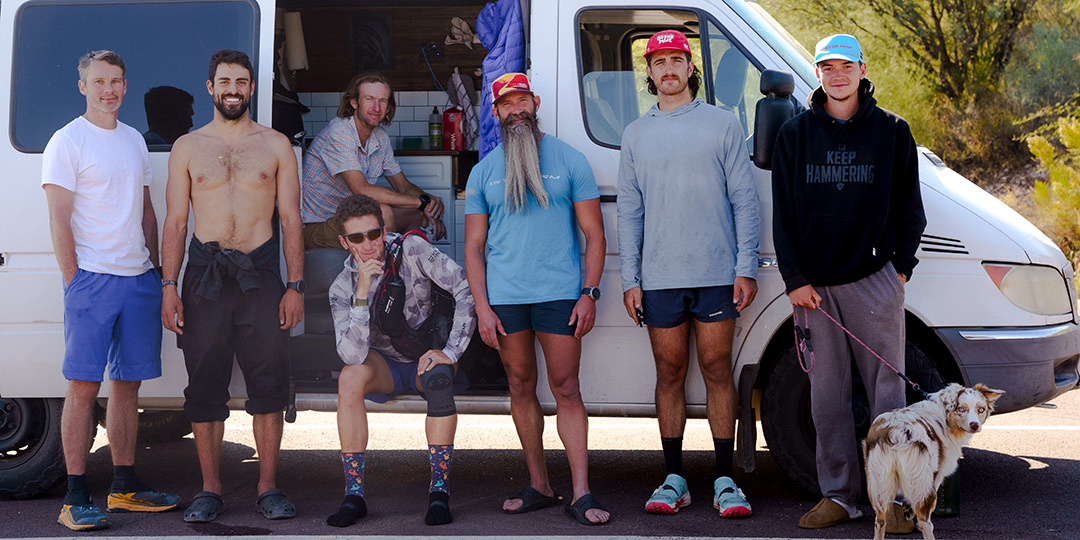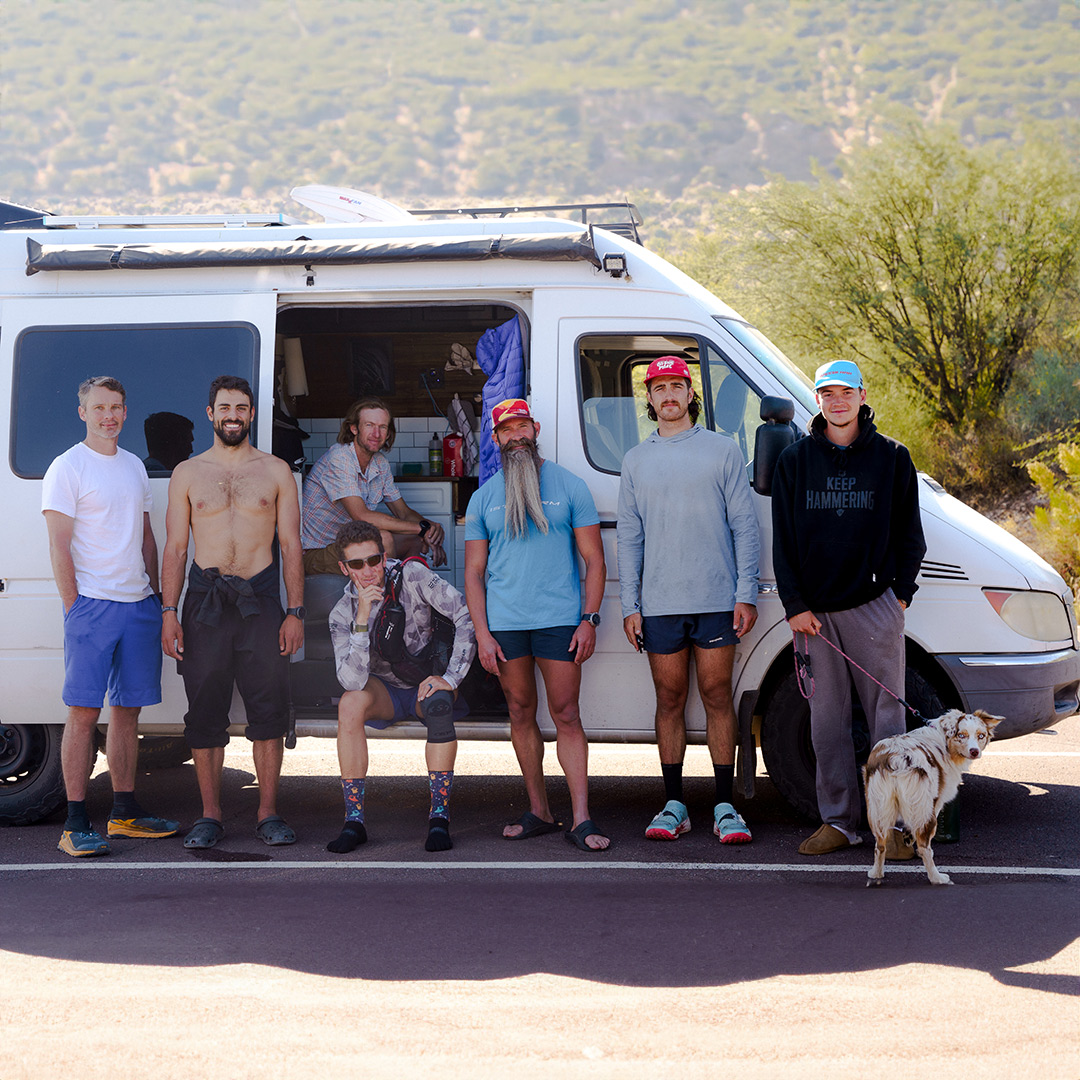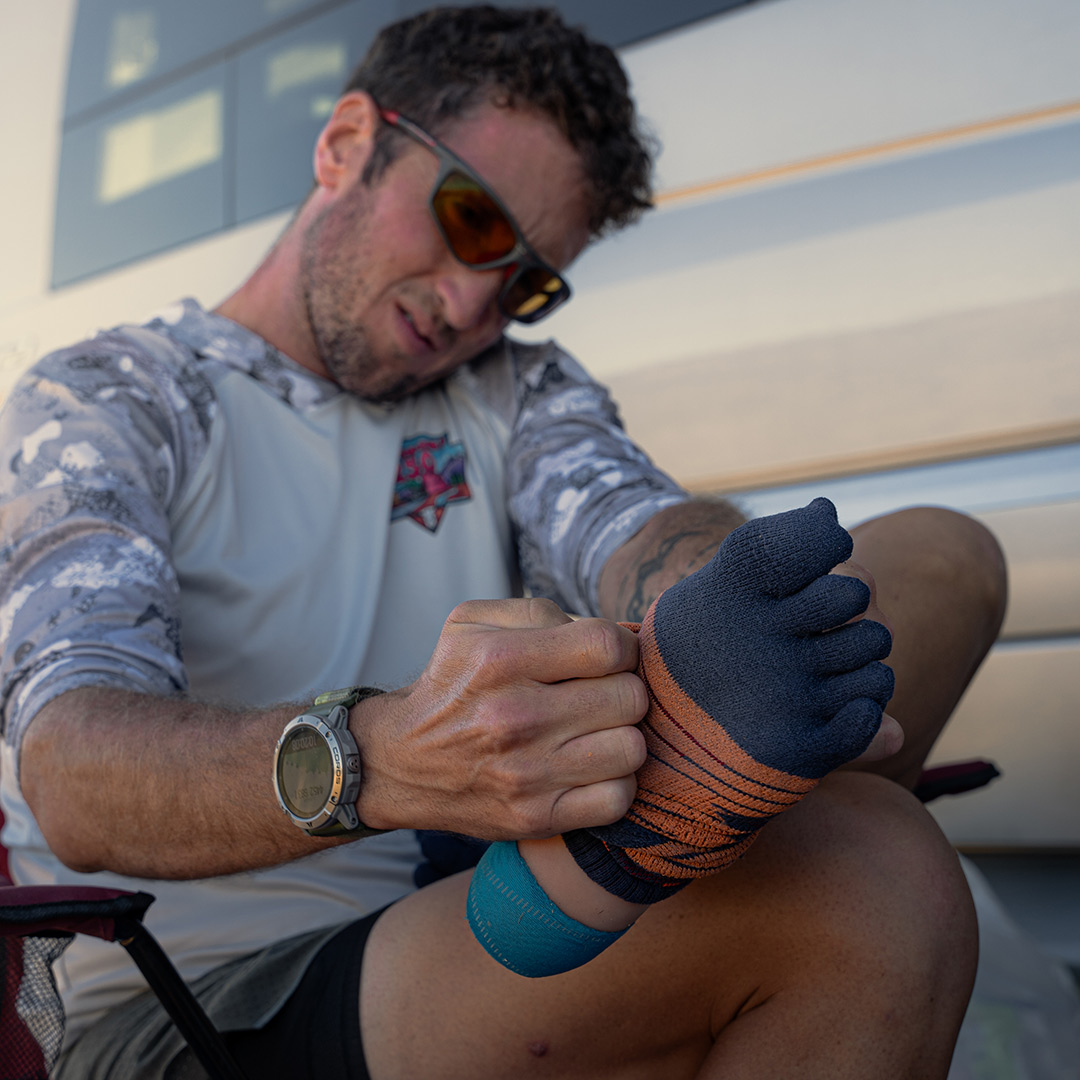Fastest Known Times, often abbreviated as "FKTs," represent the achievements of individuals who complete a specific course in the fastest recorded time. These routes can range from well-known, long-distance trails to specific point-to-point courses and can be either self-supported or completed with the help of a team. Team Injinji athlete Mike McKnight, the reigning record holder for the Colorado Trail FKT, embarked on a quest to secure yet another trailblazing achievement: the supported Arizona Trail FKT, which currently stands at thirteen days and three hours. The Arizona Trail is a recreational trail that spans over 800 miles from Mexico to Utah, connecting mountains, canyons, deserts, and everything in between. Mike’s attempt pushed the boundaries of endurance and determination. Get ready to uncover the insights, challenges, and triumphs behind Mike’s extraordinary journey along the Arizona Trail.


Could you introduce yourself, and tell us a bit about your background in hiking and trail running?
I'm Mike McKnight. I'm a professional trail runner and coach, residing in Northern Utah with my amazing family. I've been ultra running for ten years now and had my breakout year in 2019 when I won the Bigfoot 200, Tahoe 200, and Moab 240, known as the Triple Crown of 200s. I specialize in the 200+ mile distance and hold course records on the four major 200s in the country. I also have the 500-mile Colorado Trail FKT.
What inspired you to attempt the FKT of the Arizona Trail?
Getting the FKT on the Colorado Trail was one of my proudest moments as a runner. It opened up a new world to me and ignited the FKT bug. I have a goal to go after the Pacific Crest Trail (PCT) one day. So, you could say that going after the Arizona Trail FKT is part of my training to prep me for 2,000 plus miles.
Can you describe your training and preparation process for the Arizona Trail? Were there any unique challenges in preparing for this one, compared to others?
The biggest challenge is the rocky terrain and the heat. Where I live, it's extremely cold compared to Arizona, and our trails are very buffed out with hardly any rocks or technicality. The biggest change I implemented was heat training in the sauna and running in Arizona as often as I could. Last year, I attempted the Arizona Trail and stopped after 600 miles because my body literally broke down. I had no energy and so much muscle fatigue. So, this year, I hit the gym more and prioritized strength training along with my running.




How did you go about planning the logistics – like resupply points, support crew, and navigation – for this attempt?
The Arizona Trail Association has a book that shows all the crewable spots and provides information about each passage. I did a lot of studying from that book!
How did you approach nutrition and hydration strategy throughout the attempt?
Easy to digest foods on the trail, like Spring Energy, and loads of real food at the crew spots. I tried to get over 1,000 calories of real food every time I saw my crew.
What aspect of the course surprised or challenged you the most?
The heat. The first two days were in the high 80s and I was not ready for that. Also, the mountains in Southern Arizona are very steep, and even rockier than the trails up North. That totally caught me off guard.
You suffered from a muscle injury midway through the trail. How did you manage the pain throughout your journey? Ultimately, what factors influenced your decision to conclude your attempt?
I used a lot of CBD rubs which helped, but two things happened that led to my muscle strain. My glute shut down, causing my quad to do extra work. Then, it got very hot in a section, and I didn't have enough water. I suffered from heat exhaustion and got very dehydrated. The combination of overworking my quad and depleting necessary electrolytes essentially led to my strain. I called probably ten different people—friends and family who are either PTs or PAs (Physical Therapists or Physician's Assistants). Every one of them expressed concern for my meniscus. The area that was in pain and swollen, as was my VMO (Vastus Medialis Oblique), which is over the tracking of the knee. Essentially, I was told that if I continued, I'd run the risk of tearing my meniscus. If that happened, would be a long road to recovery.




Can you share some insights into the gear and equipment you used for this FKT attempt?
Speedland shoes, Spring Energy, LOTS of Injinji Trail Socks, my prescription glasses, my Coros watch, and my Ultraspire vest. I also used a ton of Keto Bricks in my breakfast, which easily added 1,000 calories to my meals.
What were some of the key takeaways and lessons you learned throughout this journey? What would you do differently if you were to attempt it again?
Be more prepared. I honestly feel that if I had enough water and didn't get dehydrated, the strain wouldn't have happened. I need to know the passages better and figure out how much water to carry for each section. I always had four liters with me, which I thought was enough, but for that one section, it wasn't. Next time, I'm going to have a fastpack handy where I can carry double the water if needed. I'll use it only on key sections where I run the risk of getting dehydrated.
What are your aspirations for the next year, after you’ve made a full recovery?
I'm going after what I'm calling the Cinco Diablo of 200s: Cocodona 250, Tahoe 200, Bigfoot 200, Divide 200, and Moab 240. Essentially, it involves completing one 200 every month (aside from July) from May to October. Let's go!
Mike’s pursuit of the FKT across the Arizona Trail exemplifies his spirit of relentless determination and dedication. Take his advice, grab a pair of Injinji socks, and embark on your own adventure on the trail!








